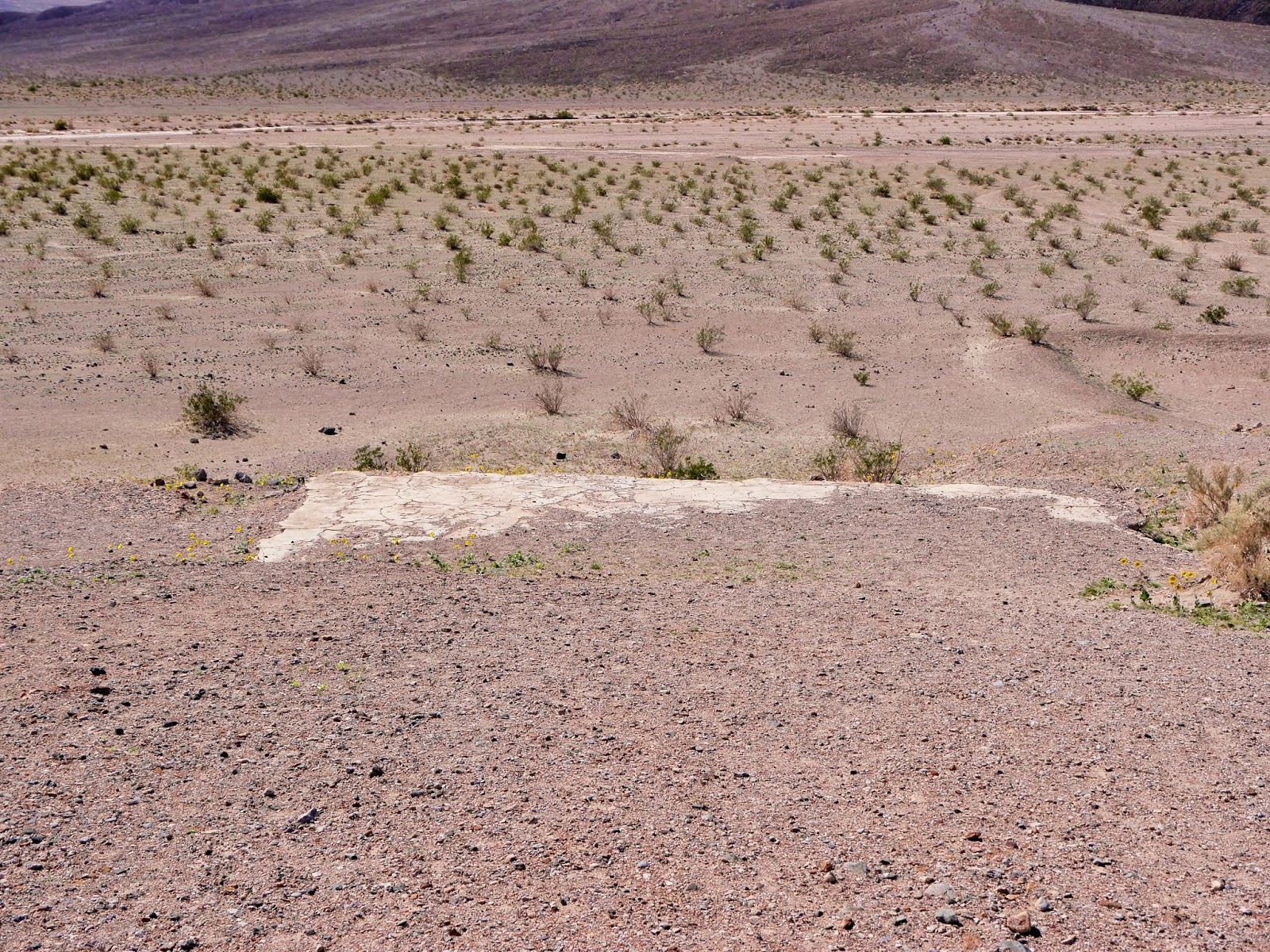Our February 2015 visit to Death Valley National Park concluded with an eastbound drive on Jubilee Pass Road from Ashford Junction toward Shoshone, California. The road passes over 1293 foot Jubilee Pass and 3315 foot Salsbury Pass along the route. At least part of the route is marked as California 178.
 |
| Darker gray Desert Hound Peak (4472') |
 |
| Looking down Rhodes Wash at the Confidence Hills and Owlshead Mountains |
 |
| More of the Owlshead Mountains |
 |
| Creosote bushes and other plants slowly cover Rhodes Wash |
 |
| Looking back at Shore Line Butte and the Panamint Range including Sugarloaf Peak (dark in center 4820') and Manly Peak (gray in background 7196') |
 |
| Foothills of the Black Mountains |
 |
| The hillside at Jubilee Pass was covered with new growth |
After crossing Jubilee Pass, the road drops down into another arm of Rhodes Wash and climbing up through Bradbury Wash before climbing up to Salsbury Pass.
 |
| The aptly named Epaulet Peak (4766') |
 |
| Rhodes Hill (2,762') |
 |
| Another view of Desert Hound Peak on the left and Smith Mountain (5383') in the center |
 |
| Harder rock still erodes in Death Valley |
 |
| Salsberry Peak (4255') in the Calico Peaks |
 |
| Rhodes Hill, Desert Hound Peak and the Panamint Range |
 |
| Ibex Hills (4144') from near the entrance sign |
An entrance fee of $20 admits all the passengers of a single vehicle for seven days. Other options include an annual Death Valley National Park Pass for $40, an Interagency Annual Pass providing access to most national park, national forest and BLM fee areas for $80 and a lifetime Interagency Senior Pass for those age 62 and older for $10.
The park website is http://www.nps.gov/deva/index.htm.
































































